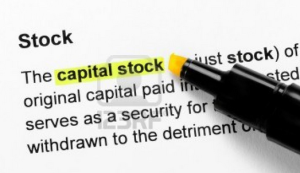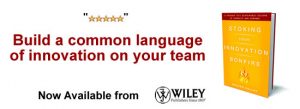Defining Innovation Capital
 “Innovation capital is the sum of all that promotes the development and changes required for achieving innovation outcomes, within one organization or its broader networked environment, for market place advantage.â€
“Innovation capital is the sum of all that promotes the development and changes required for achieving innovation outcomes, within one organization or its broader networked environment, for market place advantage.â€
“These are made up of the resources, processes, knowledge and capabilities, that are constantly evolving and highly dynamic to build greater innovating capacity.â€
“These build upon the capabilities of ‘sensing, seizing and transforming’ to build new capital that focus more upon the dynamics within innovation, that provide the true value creation in successful outcomes in final product, services or executing within business models.â€
We need to value both “stocks and flows†in equal attention to build innovation capital.
The ‘stock’ of innovation capital can render different productive value outcomes, is a bundle of the firm’s resources/assets and holds the renewal capabilities and they possesses attributes that make it a “strategic assetâ€
Innovation capital is made up of many different assets that are often context specific and interconnected and this makes it hard to build without taking a broader, more holistic approach to developing your capabilities, capacities and competencies to innovate. You ‘map’ and align these to fit your strategic goals and aspirations.
We have a pressing need to clarify a new ‘valuing model’ for building innovation capital and each organization has a unique bundle of the firms resources and assets. It is the ability to integrate, reconfigure, renew and recreate these resources and turn these into new, more dynamic capabilities that builds on a continuous basis the innovation capital.
This is one of my most important focus points to assist and aid organizations in their understanding “what makes up their unique innovation capital†and what needs to be added to deepen and strengthen this capital stock.
Building our stock then leads to the flow that then leads to building more stock. We need both stocks and flow.
Most of our capitals are learning capitals
The more we strengthen our knowledge and value our people the more we can generate new knowledge, build greater narratives, deepen discussions, make better connections and build our interactions out across growing communities. The more we discover, the more knowledge we gain and this leads up to determine a potentially better decision-making that should, in theory, give greater confidence that our invested financial capital is in ‘good hands’. Our knowledge learning, the more dynamic, the more we search, absorb, called absorptive capacity and then diffuse, the more valuable it becomes.
The power lies in the linkages we can forge, in acquisition, in assimilation and then into eventual transformation that allows known knowledge to become new wealth-generating innovation.
My stated value position is…
I provide different framing techniques for helping to grow this necessary innovation capital and build the stock of the capabilities and capacities to enable and increase the dynamic flow of innovation activities.
Wait! Before you go…
Choose how you want the latest innovation content delivered to you:
- Daily — RSS Feed — Email — Twitter — Facebook — Linkedin Today
- Weekly — Email Newsletter — Free Magazine — Linkedin Group
 Paul Hobcraft runs Agility Innovation, an advisory business that stimulates sound innovation practice, researches topics that relate to innovation for the future, as well as aligning innovation to organizations core capabilities. Follow @paul4innovating
Paul Hobcraft runs Agility Innovation, an advisory business that stimulates sound innovation practice, researches topics that relate to innovation for the future, as well as aligning innovation to organizations core capabilities. Follow @paul4innovating
NEVER MISS ANOTHER NEWSLETTER!
LATEST BLOGS
Starbucks and Big Tobacco
Back in the 1950’s smoking was glamorous, and just about everybody who was anybody smoked cigarettes. Then came the discovery, to the shock of millions, that sucking smoke into your lungs might not be good for you. Then came another revelation that one of the substances in tobacco, nicotine, which was used as a poison by the Egyptians during the times of the Great Pyramids, is addictive. People then began a mass exodus from the consumption of nicotine via inhaled smoke.
Read MoreWal-Mart Goes Green – What about your company?
With the price of gas above $3.00, some companies (and hopefully all) are beginning to look at the fuel efficiency of their fleets. Wal-Mart is the most public example of this with its trucking fleet. Its efforts include:
Read More




